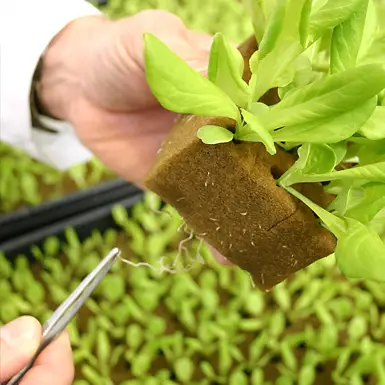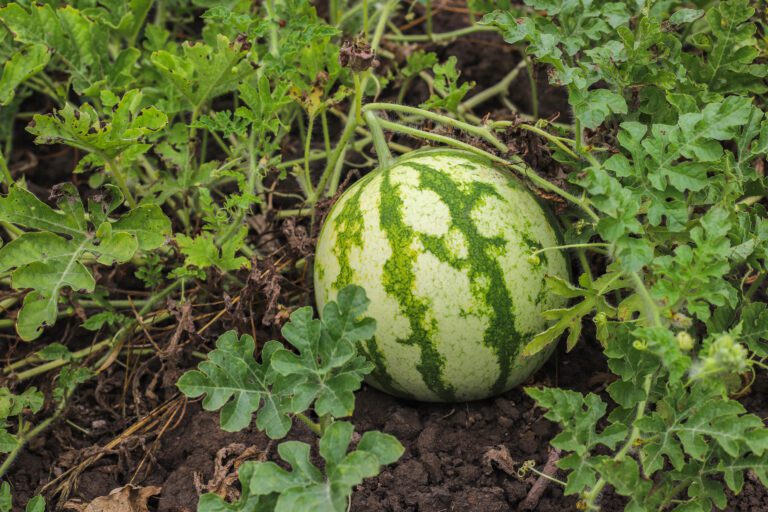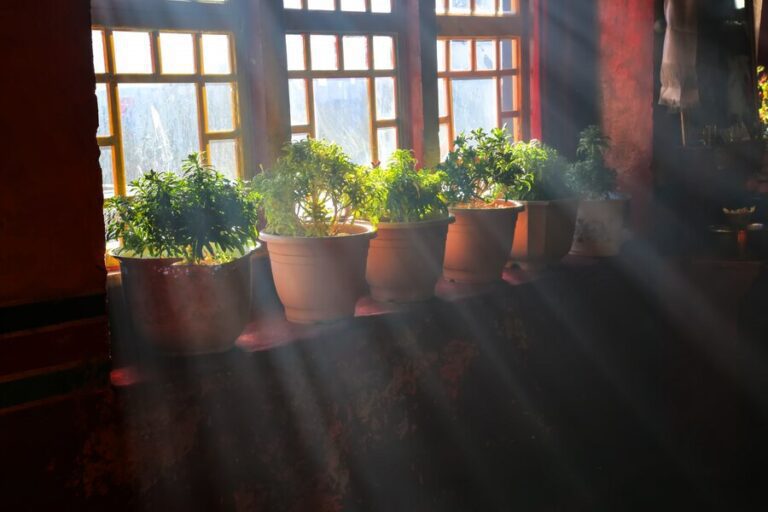How to Reduce Heat in Your Grow Room: 10 Cool Tips
Table of Contents
Effective Strategies to Lower Temperature in Your Grow Room
One of the key challenges that growers face in their indoor gardens is maintaining the optimal temperature for their plants. High temperatures can hinder growth and even lead to plant stress or death. Fortunately, there are several effective strategies that can help lower the temperature in your grow room, ensuring the ideal conditions for your plants to thrive.
One strategy is to optimize ventilation systems to enhance airflow for efficient heat dissipation. By ensuring that fresh air is consistently circulating throughout the grow room, you can effectively remove warm air and replace it with cooler air from outside. This can be achieved by strategically placing fans or air vents to create a crossflow of air, allowing the heat to be dispersed and maintaining a steady temperature. Additionally, utilizing exhaust fans can further aid in removing excess heat, ensuring a stable environment for your plants.
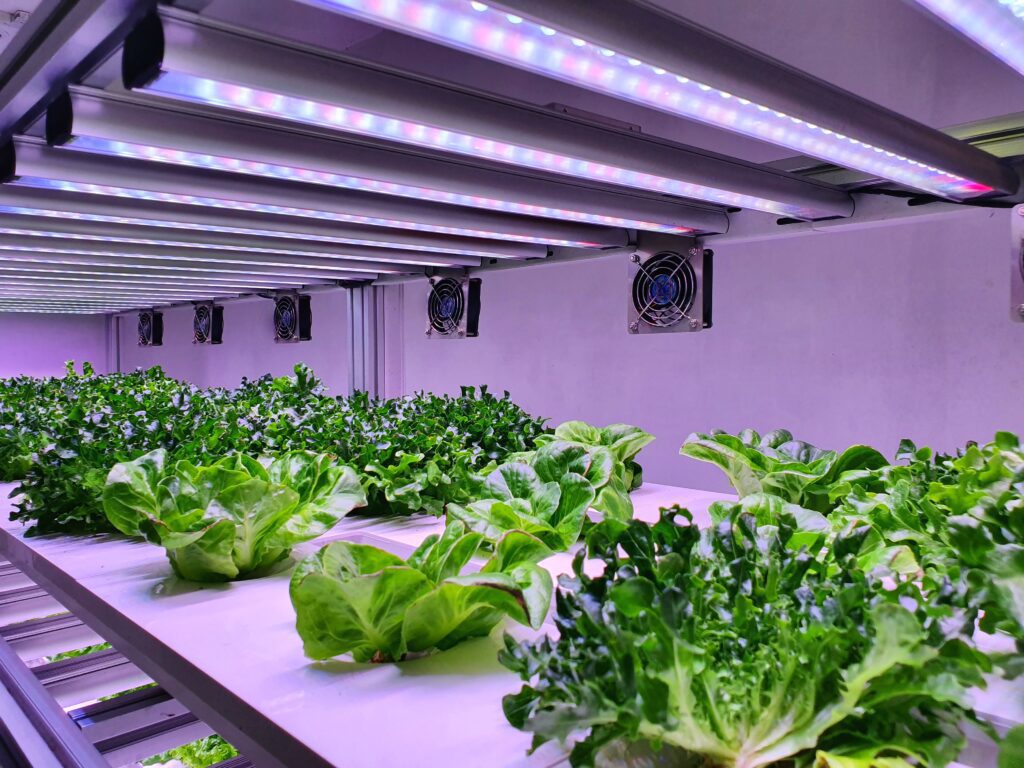
Proper insulation is another important factor to consider. By minimizing heat transfer, you can achieve and maintain ideal temperatures within your grow room. Insulating walls, floors, and ceilings can help prevent the intrusion of outside heat during warmer months and retain the desired temperature during cooler seasons. Additionally, implementing reflective surfaces can maximize light distribution while minimizing heat absorption. This can be achieved using materials such as reflective films, coatings, or insulated panels, which bounce light back onto the plants while reducing heat emission.
By employing these strategies and implementing other effective techniques, you can successfully lower the temperature in your grow room and create an optimal environment for your plants to thrive.
Understanding the Importance of Temperature Control in Your Grow Room
Temperature control is a crucial aspect of successful plant cultivation in grow rooms. Maintaining the appropriate temperature range is vital for the overall health and growth of your plants. Deviations from optimal temperatures can have a significant impact on various plant processes, including photosynthesis, transpiration, and nutrient uptake.
One of the primary reasons why temperature control is essential is because it directly affects the rate of plant metabolism. Higher temperatures can accelerate metabolic processes, leading to increased nutrient absorption and faster growth. However, beyond a certain threshold, excessive heat can have detrimental effects on plants, inhibiting their ability to photosynthesize efficiently and resulting in stunted growth or even plant death. On the other hand, if temperatures are too low, plant growth can slow down significantly, affecting the overall yield and quality of your harvest. By maintaining the ideal temperature range, you can optimize plant metabolism, ensuring healthy growth and maximizing crop productivity.
Key Factors Influencing Heat Levels in Your Grow Room
Optimizing temperature control in your grow room is crucial for the healthy growth and development of your plants. Understanding the key factors that influence heat levels can help you implement effective strategies to maintain an optimal environment.
One of the primary factors affecting heat levels in your grow room is ventilation. Without proper airflow, heat can quickly build up, causing stress to your plants. Optimizing ventilation systems by enhancing airflow and ensuring proper air exchange is essential for efficient heat dissipation. This can be achieved by installing fans or vents strategically to promote air circulation throughout the space. Additionally, considering factors such as the size of your grow room and the number of plants can help determine the appropriate ventilation system for optimal temperature control.
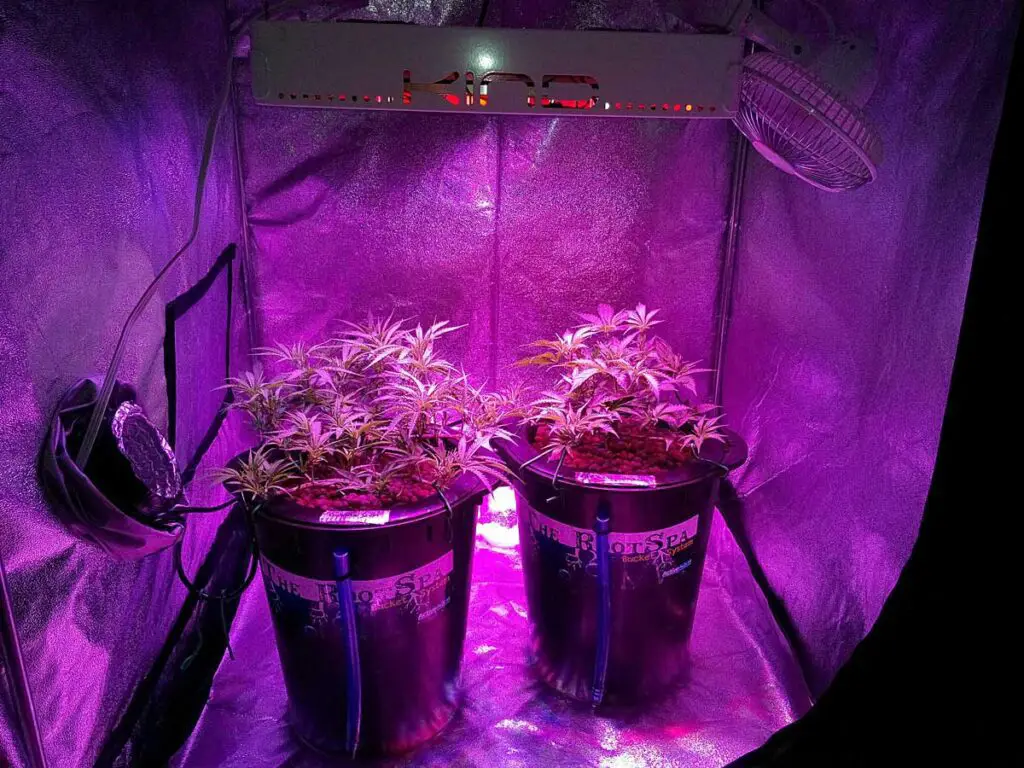
Another factor to consider is insulation. Heat transfer can significantly impact the temperature in your grow room. Proper insulation, such as insulating panels or reflective films, can minimize heat transfer and create a more stable environment. By preventing heat from escaping or entering the space, insulation can help maintain the desired temperature range for your plants’ optimal growth.
These are just a few of the key factors that influence heat levels in your grow room. By understanding these factors and implementing effective strategies, you can create an ideal environment that promotes healthy plant growth.
1. Optimizing Ventilation Systems: Enhancing Airflow for Efficient Heat Dissipation
Effective temperature control is crucial for the success of any grow room. One key strategy to lower temperature is optimizing ventilation systems to enhance airflow for efficient heat dissipation. Proper ventilation not only helps distribute fresh air throughout the room but also promotes the removal of hot air, effectively lowering the overall temperature.
To optimize ventilation systems, it is essential to focus on two key aspects: airflow and circulation. The first step is to ensure an adequate supply of fresh air entering the grow room. This can be achieved by installing intake vents or fans to bring in cool air from the outside. Next, it is crucial to facilitate the expulsion of hot air by setting up exhaust vents or fans strategically. By creating a pathway for hot air to escape, the grow room can maintain a stable and optimal temperature for plant growth. Additionally, considering the use of circulating fans within the grow room can help promote even airflow, preventing any hotspots and ensuring consistent temperatures throughout the space.
By optimizing ventilation systems to enhance airflow and circulation, growers can effectively dissipate heat and maintain a conducive environment for robust plant growth. The next sections will delve into other strategies that can further enhance temperature control in a grow room.
2. Utilizing Exhaust Fans: Removing Excess Heat and Maintaining a Stable Environment
Utilizing exhaust fans in your grow room is a crucial strategy for removing excess heat and maintaining a stable environment for your plants. These fans work by actively expelling warm air and replacing it with cooler, fresh air, helping to regulate the temperature and create optimal growing conditions.
Exhaust fans are designed to efficiently move large volumes of air, effectively removing heat from your grow room. By increasing airflow, these fans prevent heat from building up and causing temperature spikes, which can be detrimental to your plants’ health. Moreover, they help to circulate the air, ensuring a uniform environment throughout the grow room.
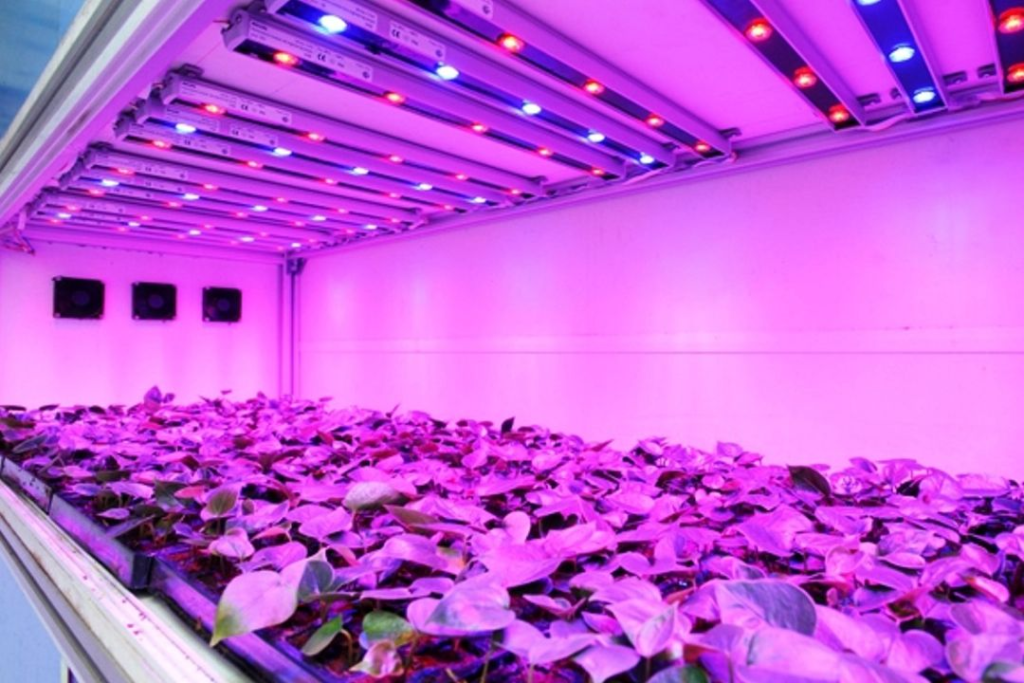
When selecting exhaust fans, it is important to consider their capacity and power efficiency. Choose fans that are appropriately sized for your grow room, taking into account the heat load produced by your lighting systems and other equipment. Opting for fans with higher airflow rates will ensure effective heat removal, while energy-efficient models can help reduce electricity costs. Additionally, consider installing multiple exhaust fans strategically to target different areas of your grow room and promote optimal air circulation.
By incorporating exhaust fans into your grow room setup, you can effectively remove excess heat and maintain a stable environment for your plants, allowing them to thrive and reach their full potential.
3. Implementing Proper Insulation: Minimizing Heat Transfer to Achieve Ideal Temperatures
Proper insulation plays a critical role in maintaining optimal temperatures in your grow room. By minimizing heat transfer, you can create an environment that promotes healthy and robust plant growth. Insulation serves as a barrier that prevents the exchange of heat between the grow room and its surroundings, helping to stabilize temperature fluctuations and reduce the need for excessive cooling or heating.
One effective method of insulation is to line the walls and ceiling of your grow room with insulating materials such as reflective films, coatings, or insulated panels. These materials have excellent thermal properties, providing a layer of protection that minimizes heat absorption and loss. By reflecting incoming light and heat back into the grow space, these insulating materials help maintain a consistent and comfortable temperature for your plants.

Additionally, sealing any gaps or cracks in the walls, floors, or around doors and windows can significantly improve insulation. These small openings can allow for heat transfer, compromising the overall efficiency of your temperature control efforts. By ensuring a tight seal, you can prevent unwanted heat exchange and create a more controlled and stable environment for your plants.
• Lining the walls and ceiling with insulating materials such as reflective films, coatings, or insulated panels
• Reflecting incoming light and heat back into the grow space to maintain a consistent temperature
• Sealing any gaps or cracks in the walls, floors, or around doors and windows to prevent heat transfer
• Creating a more controlled and stable environment for plant growth
4. Employing Reflective Surfaces: Maximizing Light Distribution while Minimizing Heat Absorption
Reflective surfaces play a crucial role in optimizing the growth environment in your grow room by maximizing light distribution and minimizing heat absorption. When it comes to indoor gardening, ensuring that your plants receive optimal levels of light is essential for their growth and development. Reflective surfaces, such as Mylar sheets or aluminum foil, help to redirect light that would otherwise be lost, ensuring that it reaches all parts of your plants and promoting uniform growth.
Not only do reflective surfaces enhance light distribution, but they also help in minimizing heat absorption. As lighting systems emit heat, especially high-intensity options like HID (High-Intensity Discharge) lamps, it is important to manage the rising temperatures in your grow room. By employing reflective surfaces, you can redirect the heat away from your plants, preventing hot spots and maintaining a more stable and controlled environment. This not only benefits the health of your plants but also aids in the prevention of mold and other issues associated with high humidity levels.
5. Selecting Efficient Lighting Systems: Choosing LEDs or Other Low-Heat Emitting Options
When it comes to selecting lighting systems for your grow room, it is crucial to choose options that emit low levels of heat. One of the most popular choices in this regard is LED (Light-Emitting Diode) lighting. LEDs have gained significant traction in the horticultural community due to their numerous benefits. Apart from their energy efficiency and long lifespan, LEDs produce minimal heat, making them an ideal choice for maintaining optimal temperature levels in your grow room.
Compared to traditional lighting fixtures such as incandescent or fluorescent bulbs, LEDs emit little to no infrared radiation, which is responsible for generating heat. This characteristic not only keeps the grow room cool but also reduces the risk of heat stress on your plants. Additionally, LEDs allow for precise customization of light spectrums, enabling you to provide your plants with the specific wavelengths they need for various growth stages. As a result, you can optimize energy usage and minimize unnecessary heat output, creating an ideal environment for your plants to thrive.
6. Managing Humidity Levels: Controlling Moisture for Improved Temperature Regulation
Controlling humidity levels is an essential aspect of temperature regulation in your grow room. High humidity can not only cause discomfort for your plants, but it can also lead to the growth of mold, mildew, and other harmful pathogens. On the other hand, low humidity levels can result in stunted growth and wilting.
To effectively manage humidity, it is crucial to understand the optimal range for your specific plants. Different crops have varying moisture requirements, and it is important to strike a balance that meets their needs. One effective strategy is to use a hygrometer to accurately measure the humidity levels in your grow room. This device will provide real-time data, allowing you to make informed decisions about humidity adjustments.
| Strategy | Description |
|---|---|
| Dehumidification Systems | Install dehumidifiers to remove excess moisture |
| Proper Ventilation | Ensure good airflow to prevent stagnant air |
| Use of Air Conditioning | AC units often have dehumidifying capabilities |
| Monitoring and Control | Employ humidity sensors to regulate levels |
| Proper Insulation | Insulate walls and windows to prevent condensation |
| Natural Ventilation | Open windows and doors during suitable conditions |
| Moisture-Absorbing Materials | Use materials that absorb and release moisture |
| Regular Maintenance | Check for leaks and fix them promptly |
| Indoor Plants | Select plants that naturally regulate humidity |
Maintaining proper ventilation and airflow is another crucial aspect of humidity management. Stale air can contribute to high humidity, as it prevents moisture from evaporating. Installing fans and ensuring proper air circulation will help dissipate excess humidity and maintain a fresh environment for your plants. Additionally, incorporating dehumidifiers or utilizing natural ventilation methods, such as opening windows or using exhaust fans, can further aid in humidity control. By managing humidity levels effectively, you can create an optimal environment for your plants to thrive.
7. Utilizing Heat Shields: Protecting Plants from Direct Heat Exposure and Ensuring Optimal Growth
Heat shields are an essential tool for maintaining the optimal growth conditions for plants in a grow room. These shields act as a protective barrier, shielding the plants from the direct heat emitted by various equipment and lighting systems. By preventing excessive heat exposure, heat shields help to create a stable and controlled environment that promotes healthy plant development.
One of the primary benefits of utilizing heat shields is their ability to regulate temperature fluctuations. When plants are exposed to extreme heat, their growth can be stunted, and they may become susceptible to various issues such as wilting or burning. By strategically placing heat shields around the plants, gardeners can create a buffer zone that minimizes direct heat exposure, allowing the plants to thrive without the risk of overheating. Additionally, heat shields contribute to maintaining consistent temperature levels within the grow room, ensuring optimal conditions for growth throughout the day and night.
In addition to protecting plants from direct heat, heat shields also play an integral role in maximizing light distribution. With their reflective surfaces, heat shields redirect the light emitted by grow lights, preventing it from being absorbed by the surrounding surfaces. This redirection of light helps to ensure that all areas of the grow room receive an adequate amount of illumination, promoting balanced plant growth and minimizing the risk of heat build-up in specific spots. By optimizing light distribution and reducing heat absorption, heat shields contribute to creating a more efficient and favorable environment for plants to flourish.
8. Installing a Cooling System: Incorporating Air Conditioning or Evaporative Cooling Techniques
To maintain optimal temperatures in your grow room, it is crucial to consider incorporating a cooling system such as air conditioning or evaporative cooling techniques. These methods can help regulate the temperature and create a stable environment for your plants to thrive.
Air conditioning is a popular choice for many indoor gardeners as it provides precise temperature control. By removing heat from the air and lowering humidity levels, air conditioning helps create a comfortable environment for your plants. This system can also improve air quality by filtering out impurities, ensuring a healthy and clean growing space. However, it is important to choose the right size and capacity of the air conditioner based on the size of your grow room to avoid excessive cooling or energy wastage.
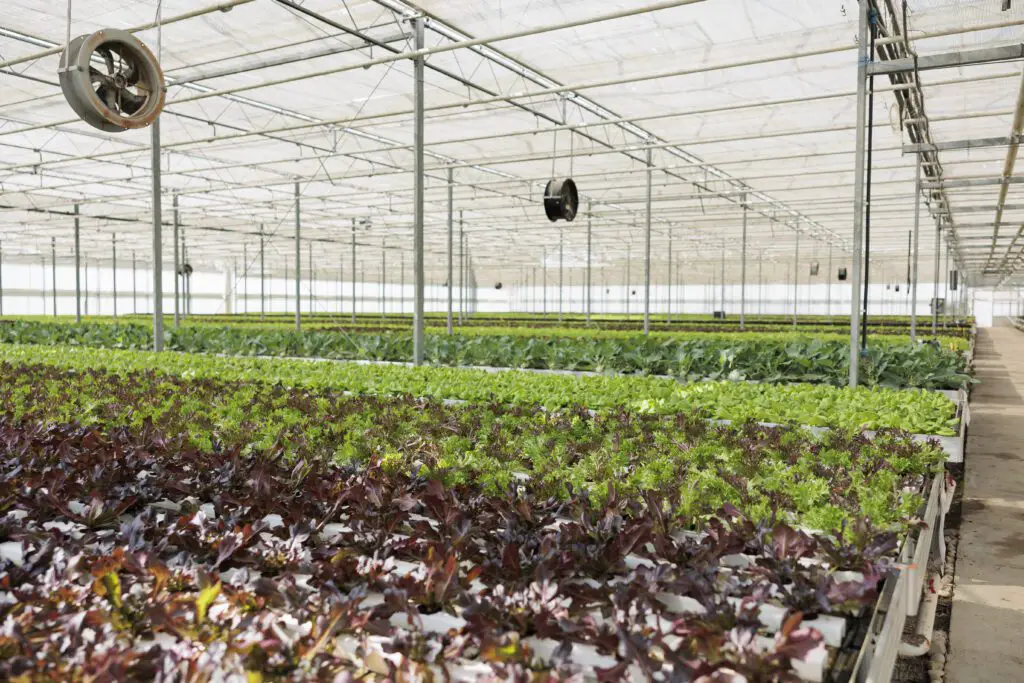
On the other hand, evaporative cooling techniques offer a cost-effective and energy-efficient alternative. This method works by utilizing the cooling effect of water evaporation to lower temperatures in the grow room. Evaporative cooling systems typically consist of pads or media that are moistened with water, and as air passes through them, it evaporates the water, lowering the temperature. This technique is particularly effective in hot and dry climates, where the intake air is warm. It is important to monitor humidity levels in the grow room to ensure they do not become too high, as excessive moisture can promote the growth of mold and mildew.
9. Strategic Placement of Equipment: Preventing Heat Build-Up by Organizing Devices Effectively
Strategically placing your equipment in a grow room can play a crucial role in preventing heat build-up and maintaining optimal temperature levels for your plants. By organizing your devices effectively, you can create an environment that promotes healthy growth and maximizes productivity.
One important consideration when it comes to equipment placement is ensuring proper airflow. Avoid clustering devices together, as this can restrict airflow and lead to heat pockets. Instead, aim to space out your equipment, allowing for adequate ventilation between each item. Additionally, position fans or air vents strategically to facilitate the movement of air throughout the entire grow room. This will help dissipate excess heat and maintain a more even temperature distribution.
Furthermore, it is essential to consider the heat generated by different devices. High-heat-producing equipment, such as grow lights or pumps, should be placed farther away from sensitive plants to prevent them from experiencing excessive heat stress. Similarly, equipment that generates less heat can be positioned closer to your plants without causing any detrimental effects. By carefully considering the placement of your equipment, you can greatly minimize heat build-up and create a more harmonious environment for your plants to thrive.\
10. Incorporating Heat-Resistant Materials: Using Reflective Films, Coatings, or Insulated Panels
Reflective films, coatings, and insulated panels are indispensable tools for maintaining optimal temperatures in a grow room. By incorporating these heat-resistant materials into the design, growers can effectively manage heat levels and create a conducive environment for plant growth.
Reflective films, such as Mylar, are widely used for their ability to redirect and intensify light. By adhering these films to the walls, ceiling, and other surfaces within the grow room, growers can enhance light distribution without compromising heat regulation. The reflective properties of these films help minimize excessive heat absorption, ensuring a more balanced and controlled temperature for plant cultivation. Coatings, on the other hand, provide an extra layer of insulation and protection. By applying a heat-resistant coating to the walls and ceiling, growers can further reduce heat transfer and maintain a stable environment.
| Method | Description | Pros | Cons |
|---|---|---|---|
| Reflective Films | Thin films to reflect heat | Cost-effective, easy application | Limited effectiveness in extremes |
| Coatings | Heat-resistant coatings | Versatile, durable | Professional installation needed |
| Insulated Panels | Panels with insulation | Excellent insulation, versatile | Bulky, may require expertise |
Insulated panels are highly effective in combating temperature fluctuations. These panels, comprised of layers of insulation materials, act as barriers to prevent heat from escaping or entering the grow room. With their superior insulating properties, insulated panels help regulate temperatures and provide a more energy-efficient solution. By strategically installing these panels, growers can create a thermal barrier that allows for precise control over the grow room’s temperature, ensuring optimal conditions for plants to thrive.
11. Monitoring Temperature and Humidity: Investing in Accurate Sensors for Precise Control
Monitoring temperature and humidity levels in your grow room is crucial for maintaining optimal growing conditions for your plants. Investing in accurate sensors is a key strategy for achieving precise control over these variables. By obtaining real-time data on temperature and humidity, you can make informed decisions and take necessary actions to create a healthy and productive environment for your plants.
Accurate sensors allow you to closely monitor the temperature and humidity levels in your grow room, ensuring that they remain within the ideal range for your specific plants. This precision control is vital because even slight deviations from the optimal conditions can have detrimental effects on plant growth and development. With the help of these sensors, you can identify any fluctuations or irregularities in temperature and humidity, enabling you to promptly adjust and stabilize these factors. This proactive approach minimizes the risk of plant stress, disease, or even crop failure, ensuring that your plants thrive and reach their full potential. Additionally, accurate monitoring of temperature and humidity levels allows you to fine-tune your cultivation practices, making informed adjustments that can enhance crop yield, quality, and overall success.
12. Adjusting Photoperiod
Adjusting the photoperiod in your grow room can have a significant impact on plant growth and development. The photoperiod refers to the duration of light and darkness that plants are exposed to in a 24-hour period. By manipulating the length of light exposure, you can influence crucial physiological processes in your plants, such as flowering, fruiting, and vegetative growth.
One of the main reasons why adjusting the photoperiod is crucial is because different plants have specific light requirements at different stages of their growth cycle. For instance, during the vegetative phase, plants typically require longer periods of light exposure to promote leaf and stem development. On the other hand, during the flowering phase, shorter light durations are often necessary to trigger the reproductive process.
Moreover, adjusting the photoperiod can also help regulate temperature and energy consumption in your grow room. By aligning the duration of light exposure with the outside temperature, you can prevent excessive heat buildup during the day and ensure a more stable and controlled environment for your plants. This can be particularly important in warm climates or during summer months when your grow room may experience higher temperatures. Additionally, modifying the photoperiod to coincide with cheaper electricity rates or off-peak times can also optimize energy usage and reduce operational costs.
What is photoperiod and why is it important to adjust it in a grow room?
Photoperiod refers to the duration of light and darkness that plants are exposed to. It is important to adjust photoperiod in a grow room because it directly influences the growth and development of plants, including their flowering and fruiting stages.
How can adjusting photoperiod help lower temperature in a grow room?
Adjusting photoperiod can help lower temperature in a grow room by reducing the amount of time lights are on, which in turn reduces heat emitted by the lighting system. This can help maintain a cooler environment for the plants.
Are there specific guidelines for adjusting photoperiod in a grow room?
Yes, there are specific guidelines for adjusting photoperiod in a grow room. It depends on the specific plant species being grown, as different plants have different light requirements. It is important to research the light needs of the specific plants and adjust the photoperiod accordingly.
Can adjusting photoperiod have any negative effects on plant growth?
Adjusting photoperiod can have negative effects on plant growth if not done properly. Abrupt changes in photoperiod can cause stress to plants and disrupt their growth cycles. It is important to gradually adjust the photoperiod over a period of time to minimize any negative impact on plant growth.
Are there any tools or equipment that can assist in adjusting photoperiod?
Yes, there are timers and light control systems available that can assist in adjusting photoperiod. These tools can automate the process and ensure consistent and accurate adjustments to the duration of light and darkness in the grow room.
Can adjusting photoperiod affect the quality of the plants’ yield?
Yes, adjusting photoperiod can affect the quality of the plants’ yield. For example, some plants require a certain amount of darkness to trigger their flowering stage. If the photoperiod is not adjusted correctly, it can result in poor flowering and lower quality yield.
How frequently should photoperiod be adjusted in a grow room?
The frequency of adjusting photoperiod in a grow room depends on the specific needs of the plants being grown. Some plants may require consistent and stable photoperiod throughout their growth cycle, while others may benefit from gradual adjustments as they progress through different stages. It is important to research and understand the specific requirements of the plants to determine the frequency of adjusting photoperiod.
Can adjusting photoperiod help save energy costs in a grow room?
Yes, adjusting photoperiod can help save energy costs in a grow room. By reducing the amount of time lights are on, energy consumption can be reduced, resulting in lower electricity bills.
Are there any risks associated with adjusting photoperiod?
There are minimal risks associated with adjusting photoperiod if done properly. However, abrupt changes or incorrect adjustments can cause stress to plants and affect their growth. It is important to research and understand the specific requirements of the plants and make gradual adjustments to minimize any risks.
Can adjusting photoperiod affect the timing of plant harvest?
Yes, adjusting photoperiod can affect the timing of plant harvest. By manipulating the duration of light and darkness, growers can influence the flowering and fruiting stages of plants, which ultimately determines the timing of harvest. Proper adjustment of photoperiod can help ensure plants reach their desired maturity for harvest at the desired time.
Is adjusting photoperiod only necessary for indoor grow rooms?
No, adjusting photoperiod is not only necessary for indoor grow rooms. It is also important for outdoor growing, especially when cultivating plants in greenhouses or areas with artificial lighting. Controlling the duration of light and darkness can help optimize plant growth and yield in both indoor and outdoor settings.

Pallavi Gupta is a burgeoning writer at SouthElMonteHydroponics, blending her passion for data analysis with a keen interest in biotechnology. Currently pursuing a Bachelor’s in Biotechnology at Amity University, Pallavi delves into the intricacies of life sciences while gaining hands-on experience in the exciting world of data analysis. Her unique background provides a fresh perspective on hydroponic farming, as she explores the intersection of biotechnology and sustainable agriculture. Through her writing, Pallavi aims to bridge the gap between data-driven insights and innovative farming practices, inspiring others to harness technology for a greener future.


